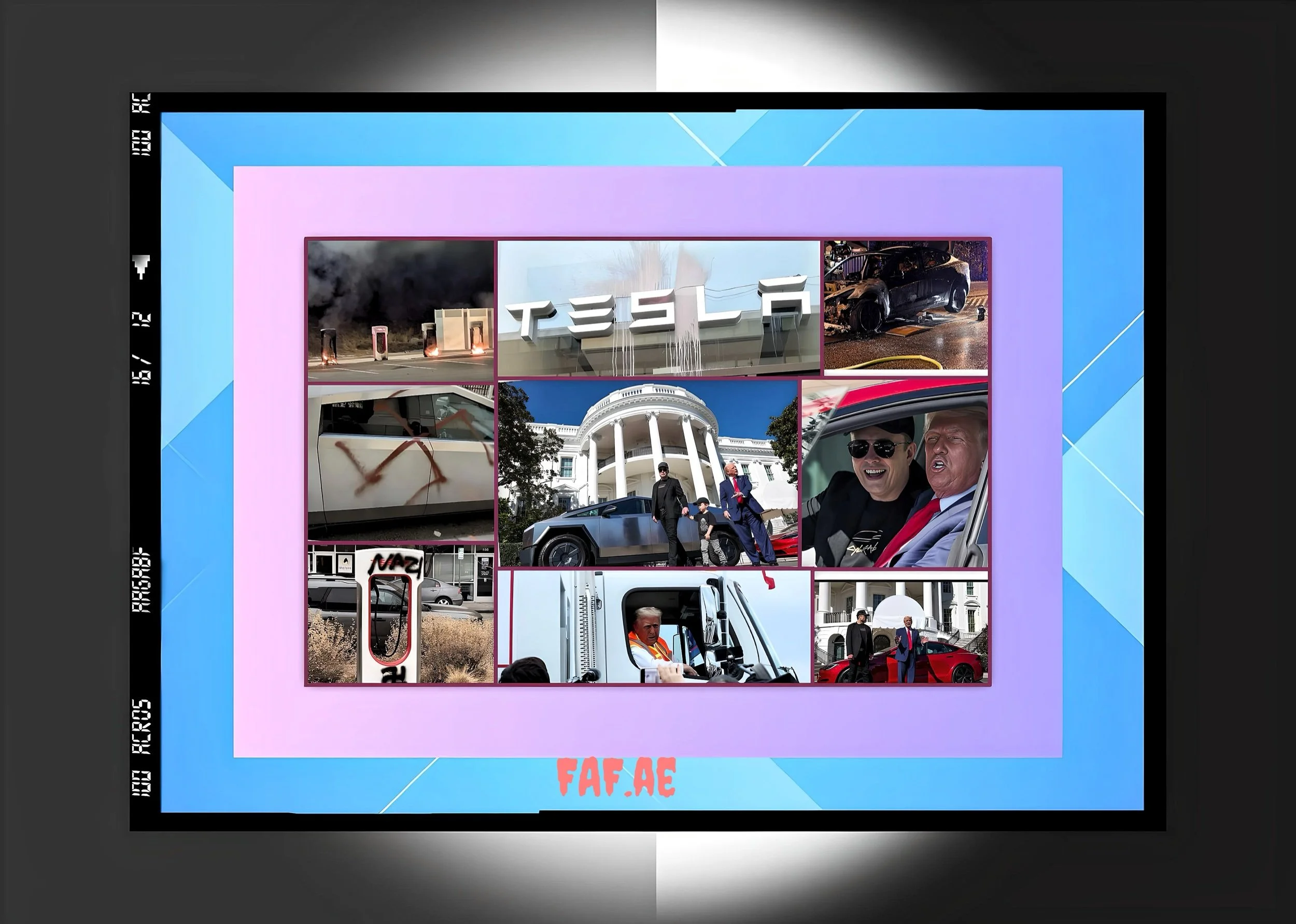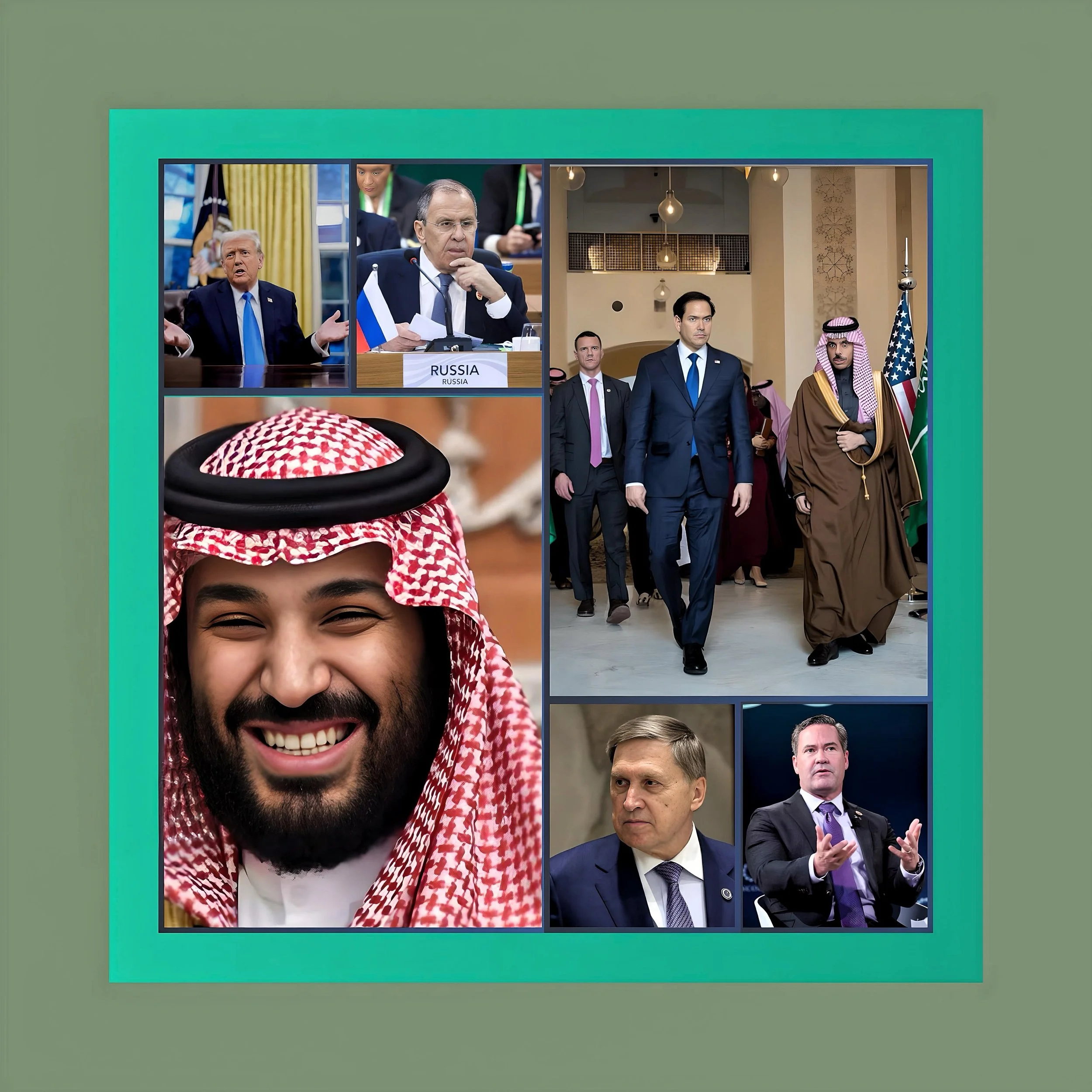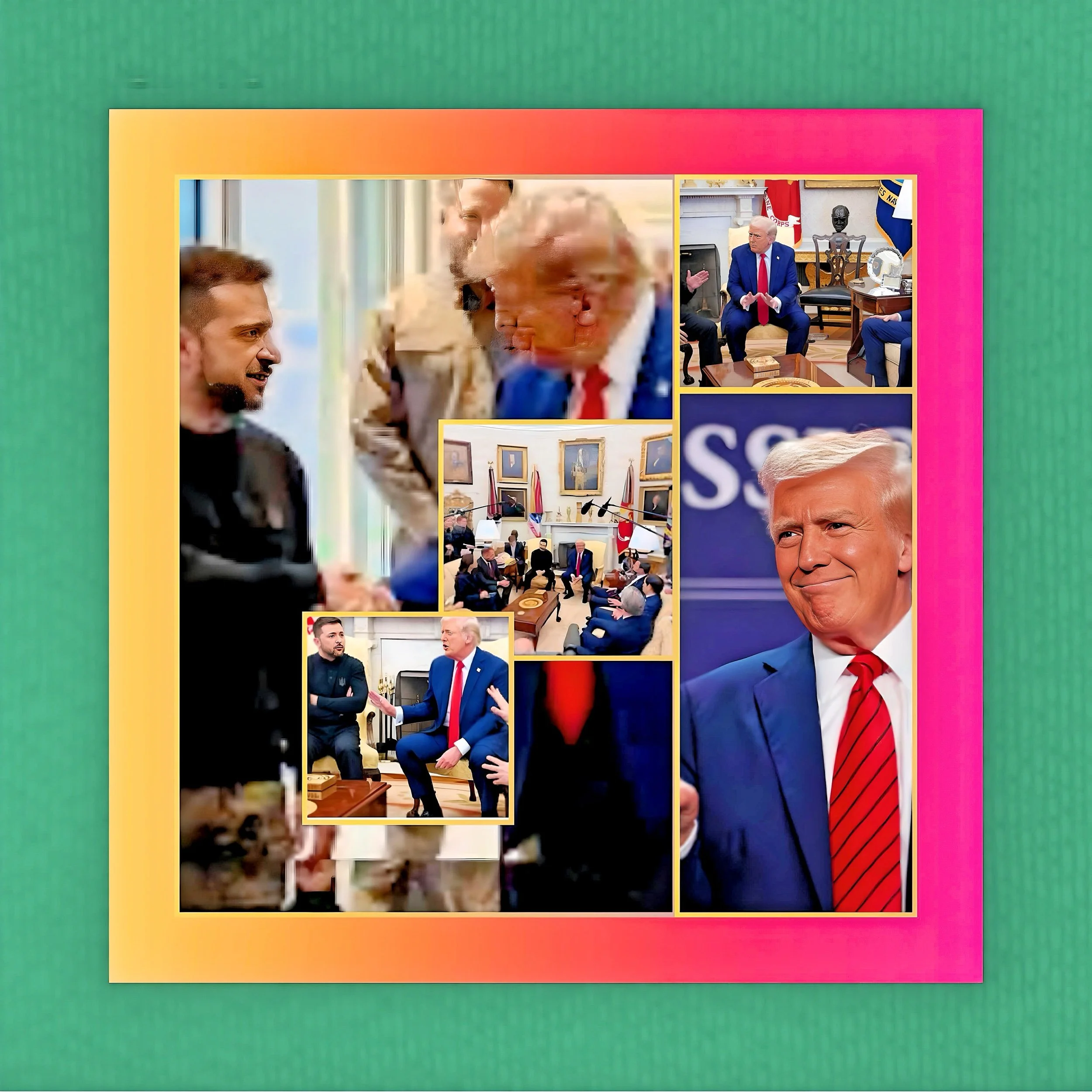U.S.-Ukraine Diplomatic Talks in Saudi Arabia: Context, Proceedings, and Outcomes
Introduction
The recent high-stakes negotiations between the United States and Ukraine, hosted by Saudi Arabia in Jeddah on March 11, 2025, marked a critical juncture in efforts to resolve the ongoing Russo-Ukrainian conflict.
The White House characterized these discussions as “productive,” signaling a potential thaw in bilateral relations following a contentious Oval Office meeting between President Donald Trump and Ukrainian President Volodymyr Zelenskyy in late February. Key outcomes included a proposed 30-day ceasefire contingent on Russian acceptance, preliminary agreements on resuming U.S. military aid and intelligence sharing, and progress toward a controversial minerals-sharing deal.
FAF examines the geopolitical context, participants, negotiation dynamics, and implications of these talks within the broader framework of international diplomacy.
Geopolitical Context Leading to the Jeddah Talks
Escalating Tensions in U.S.-Ukraine Relations
The diplomatic rupture between Washington and Kyiv originated during Zelenskyy’s February 28 visit to the White House, where a heated exchange with Trump and Vice President JD Vance exposed deepening fissures.
Trump accused Ukraine of prolonging the conflict and risking global stability, declaring, “You’re risking War III, and what you’re doing is extremely disrespectful to the nation.” This confrontation led to an immediate freeze on U.S. military assistance and restricted intelligence sharing—a lifeline for Ukraine’s defense against Russian advances.
The breakdown underscored Trump’s transactional approach to foreign policy, prioritizing securing access to Ukraine’s rare mineral reserves over unconditional support.
Saudi Arabia’s Emergence as a Neutral Mediator
Saudi Arabia’s selection as the negotiation venue reflects Crown Prince Mohammed bin Salman’s strategic pivot toward positioning the kingdom as a global diplomatic arbiter.
Despite Western criticism over human rights abuses and the 2018 murder of journalist Jamal Khashoggi, Riyadh has cultivated ties with both Western and Russian blocs, maintaining OPEC+ oil alliances with Moscow while hosting Arab League summits attended by Zelenskyy.
Jeddah, a Red Sea port city with a history of hosting sensitive dialogues, provided a controlled environment insulated from media scrutiny—a deliberate choice to facilitate candid discussions.
Key Participants and Their Strategic Roles
U.S. Delegation: Prioritizing Concessions and Resource Access
Secretary of State Marco Rubio led the American contingent, flanked by National Security Adviser Mike Waltz and Middle East envoy Steve Witkoff. Rubio framed the talks as a litmus test for Ukraine’s willingness to make “difficult decisions,” including territorial concessions and acquiescing to a minerals agreement granting U.S. companies exploration rights in exchange for resumed aid.
The Trump administration’s objectives centered on securing a rapid ceasefire to avert further military expenditures and leverage Ukraine’s resource wealth—a stance criticized by European allies as undermining Kyiv’s sovereignty.
Ukrainian Delegation: Balancing Compromise and Sovereignty
President Zelenskyy’s absence from the main negotiations underscored Kyiv’s cautious approach. Instead, his chief of staff, Andriy Yermak, spearheaded a delegation comprising Foreign Minister Andriy Sybiha, Defense Minister Rustem Umerov, and Deputy Chief of Staff Pavlo Palisa.
Zelenskyy’s pre-talk meeting with Crown Prince Mohammed bin Salman emphasized prisoner exchanges and security guarantees, reflecting Ukraine’s insistence that any ceasefire must not legitimize Russian territorial gains.
The delegation sought to restore intelligence cooperation and military aid while resisting pressure to cede occupied regions.
Saudi Mediation: Bridging Divergent Interests
Saudi Arabia’s facilitation of the talks extended beyond venue provision. Crown Prince Mohammed leveraged Riyadh’s ties with Moscow—forged through OPEC+ collaboration—to signal openness to future Russia-U.S. dialogues, potentially involving President Vladimir Putin.
Hosting both sides, the kingdom bolstered its image as a neutral intermediary capable of navigating multipolar alliances. However, critics questioned its autocratic governance and selective engagement with conflicts like Sudan and Gaza.
Negotiation Dynamics and Key Proposals
The 30-Day Ceasefire Framework
The most concrete outcome emerged from closed-door sessions in which Ukrainian officials conditionally accepted a 30-day ceasefire backed by the U.S., contingent on Russian compliance.
The proposal excluded battlefield truces, focusing instead on halting aerial and naval strikes—a nod to Ukraine’s recent drone offensive against Moscow and Russia’s Black Sea blockade.
While Kyiv framed this as a confidence-building measure, U.S. negotiators viewed it as a precursor to broader territorial negotiations, urging Ukraine to recognize Russia’s control over Crimea and parts of Donbas.
Minerals Agreement and Aid Resumption
A contentious minerals-sharing deal, initially scuttled during Zelenskyy’s February White House visit, resurfaced as a bargaining chip.
The Trump administration linked resumed military aid ($61 billion pending since late 2024) to Ukraine’s acceptance of joint resource development, particularly lithium and cobalt reserves critical for U.S. tech industries.
Rubio hinted at “progress” on this front, though Ukrainian officials demanded explicit security guarantees to prevent future Russian aggression before finalizing any agreement.
Intelligence Sharing and Electoral Pressures
The partial restoration of U.S. intelligence sharing—critical for countering Russian missile strikes—remained a pivotal yet unresolved issue. Former U.S. Ambassador to Ukraine John Herbst noted that lifting Trump’s February 28 restrictions would signal Washington’s recommitment to Kyiv, whereas maintaining the freeze would indicate continued coercive diplomacy.
Concurrently, U.S. envoys floated the idea of wartime elections in Ukraine, a proposal met with skepticism by opposition leaders wary of legitimizing occupied territories’ exclusion.
Outcomes and Immediate Reactions
White House Declares Diplomatic Victory
In a March 10 statement marking Trump’s 50th day in office, the White House hailed the Jeddah talks as a historic achievement, asserting, “President Trump has brought Russia and Ukraine to the negotiating table through historic peace talks in Saudi Arabia in pursuit of peace.”
This narrative aimed to deflect criticism over aid suspensions and Trump’s perceived favoritism toward Putin, who has yet to comment on the ceasefire proposal.
Ukraine’s Cautious Optimism
Zelenskyy characterized the discussions as “constructive” but reiterated that lasting peace requires “realistic proposals and mutual compromises,” notably the return of abducted children and prisoners.
Andriy Yermak affirmed Kyiv’s commitment to “protecting Ukrainian interests” while acknowledging the need for “effective work with American partners.” However, Ukrainian civil society groups warned against concessions that might embolden Russian revanchism.
Russian Silence and Military Posturing
Moscow’s absence from the talks underscored its rejection of third-party mediation. Kremlin spokesman Dmitry Peskov dismissed the ceasefire as “meaningless without Russian participation.”
Concurrently, Russian forces escalated artillery bombardments in Kharkiv and Zaporizhzhia, signaling disapproval of the negotiations.
Analysts interpreted this as an attempt to strengthen Putin’s hand ahead of potential direct talks with Trump, rumored for late March.
Strategic Implications and Future Scenarios
Saudi Arabia’s Diplomatic Ascendancy
The Jeddah talks cemented Riyadh’s role as a mediator capable of convening adversarial powers, a status previously monopolized by Qatar and Switzerland.
Crown Prince Mohammed advanced his vision of Saudi Arabia as a Sunni Muslim leader and non-aligned peacemaker by hosting U.S.-Ukraine negotiations alongside earlier Russia-U.S. dialogues in Riyadh (February 18) and Istanbul (February 27).
However, this ambition risks overextension, given the kingdom’s limited influence over Moscow’s wartime calculus.
U.S. Policy Shifts and Transatlantic Rifts
Trump’s transactional approach has alienated NATO allies, particularly Poland and the Baltic states, who view the minerals deal and ceasefire push as undermining collective security.
European Council President Charles Michel cautioned against “unilateral concessions that reward aggression,” reflecting broader anxieties over U.S. disengagement from multilateral frameworks. Conversely, Trump’s supporters argue that pressuring Ukraine to negotiate could prevent a protracted conflict draining U.S. resources.
Pathways to Sustained Peace
The proposed ceasefire, while fragile, offers a template for incremental de-escalation. Its success hinges on Russia’s willingness to halt aerial strikes—a prospect complicated by Moscow’s recent territorial gains near Avdiivka.
Should the truce hold, follow-up negotiations could address thornier issues like Crimea’s status, reconstruction financing, and security guarantees.
However, Ukraine’s insistence on retaking all occupied territories and Russia’s maximalist demands pose significant hurdles.
Conclusion
The Jeddah talks exemplify the complex interplay of diplomacy, resource competition, and geopolitical realignments that shaped the trajectory of the Russo-Ukrainian combat.
While the White House’s “productive” characterization reflects short-term diplomatic gains, lasting peace remains contingent on bridging the chasm between Ukrainian sovereignty demands and Russian imperial objectives.
Saudi Arabia’s mediation, though innovative, cannot substitute for direct Moscow-Kyiv dialogue, which the U.S. has yet to facilitate.
As the proposed ceasefire undergoes battlefield testing, the international community must balance pragmatic engagement with unwavering support for territorial integrity—a tightrope walk requiring nuanced statecraft and multilateral coordination.
Key notes form the talks
On March 11, 2023, the United States and Ukraine announced a significant agreement calling for an immediate 30-day ceasefire in Ukraine, contingent upon an affirmative response from Russia. This development is accompanied by reports suggesting that the United States has reinstated intelligence sharing and military assistance during this period.
Ukrainian President Volodymyr Zelensky highlighted that the ceasefire is intended to halt combat operations across the entire frontline, establish a moratorium on long-range missile and drone strikes, and cease military activities in the Black Sea. The ceasefire would commence promptly upon Russia's acceptance of the U.S. proposal.
In a statement regarding the timeline for Russia's response, Secretary of State Marco Rubio emphasized the importance of a swift decision, stating that the U.S. will communicate the ceasefire proposal through various diplomatic channels, indicating that the responsibility now lies with Russia.
However, some voices within Russia, particularly from ultranationalist circles, have expressed reservations regarding the ceasefire, arguing that the U.S. and Ukraine might reconsider their commitment to peace at the first opportunity and emphasizing the perceived existential nature of the conflict for Russia.
As of this publication, the Kremlin has not provided an official response to the ceasefire proposal, while Russian state media appears to be reframing previous positions.






